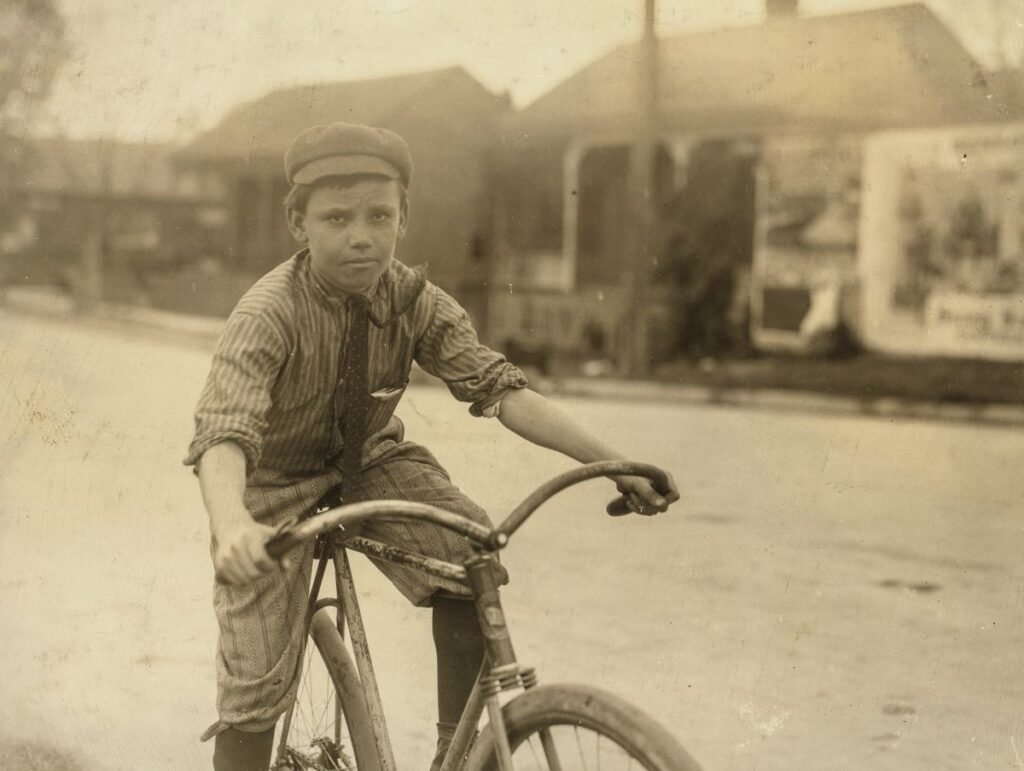In the United States, bicycles were not initially marketed to children. Before the turn of the 20th century, the advertisement and target consumers were adults. It was not until the turn of the century when improvements in the usability of bicycles and the lack of interest coming from adult consumers caused the market to shift its focus towards children, particularly young boys. During World War I, there was an increase in advertising for children capitalizing on anxieties created by the war. Bicycles were shown as a means for young boys to show their masculinity, patriotism, and individualism (Gershon, 2017). Advertisements showed strong, upstanding, American boys delivering and selling war bonds house to house, thus becoming active participants in the war effort and in society as a whole.
The marketing of bikes to children and boys, in particular, started in the 1910s and accelerated in the 1920s, creating a feeling of necessity in young boys for having a bicycle and being able to ride it. In addition to the more abstract benefits that were being pushed by the bicycle industry, there were also very real physical health advantages to bicycles. This sentiment was pushed more universally for both boys and girls. Bicycles were and continue to be an effective form of exercise and so emphasis on this aspect of the product in advertisements made sense and played a role in the physical growth of American children at this time (Turpin, 2015). As a rite of passage, it’s important to remember that the popularity of bicycles did not start with children. These products were pushed on and widely adopted by adults before the first children’s bicycles were ever produced. So the creation of a market for children’s bikes, though driven by market pressures, represents an important milestone between childhood and adulthood. Although widespread use of bicycles as a mode of transportation seems like a new, environmentally conscious phenomenon, this is not the case. Cities like Boston and Minneapolis had thriving populations of cyclists both adult and juvenile. The invention of the bicycle was a new innovation and one that all members of society wished to partake in (Petty, 2010). And so it is not surprising that personal ownership of and the ability to use a bicycle is massively important to individual children and granted them a greater sense of self.

Many young boys found themselves working long and arduous hours as bike messengers and delivery boys. Although this was far from the noble depiction of Boy Scouts selling war bonds, this was fairly adult employment, requiring children to work long hours often in dangerous places, at the very least in places not typically deemed suitable for children. This would include places like red-light districts, areas where prostitution and sex work were practiced widely, and where criminal activity was far more prevalent. Some employers of these children would not allow them to enter such areas, but many did not restrict where their employees made deliveries or when they made deliveries (Turpin, 2015). This dynamic likely led many children into very adult situations on their own at a very young age.

In addition to the use of bicycles in children’s work, kids were also able to explore their surroundings with peers. With a legitimate mode of transportation, young people could now navigate their towns and cities without necessarily needing parental supervision. If a group of kids wanted to go to the park or go to a corner store for sweets, they could do so by themselves. This instilled a much greater sense of independence in children who owned and knew how to ride bikes, and in doing so, created another marker of the rite of passage. The world for these young people increased in size, the distance they could adventure from their home grew, and their need for help from adults to accomplish both chores and the things they themselves would like to do diminished. Children who did not own bikes or weren’t old enough to learn how to ride were restricted from all of these freedoms. Chores out of the house were limited, and the distance they could go from their homes was constrained.